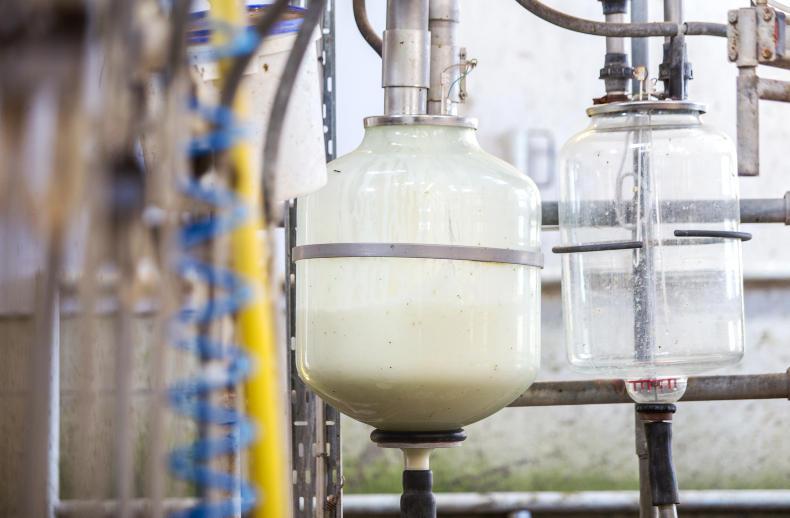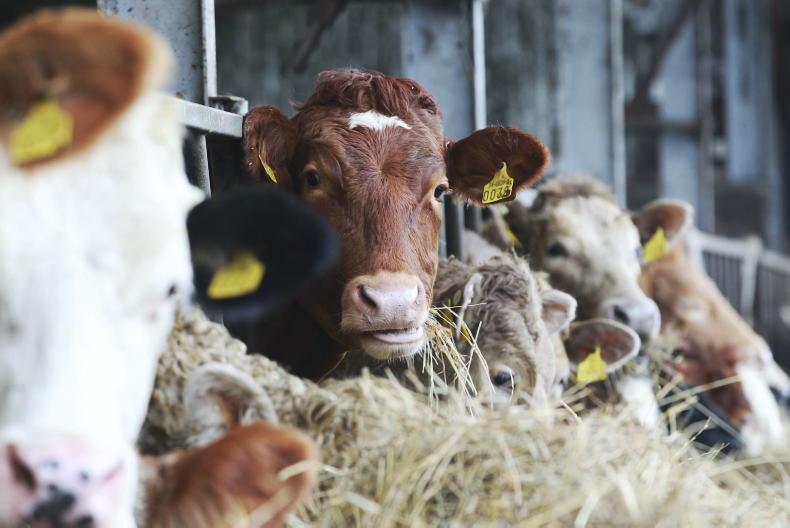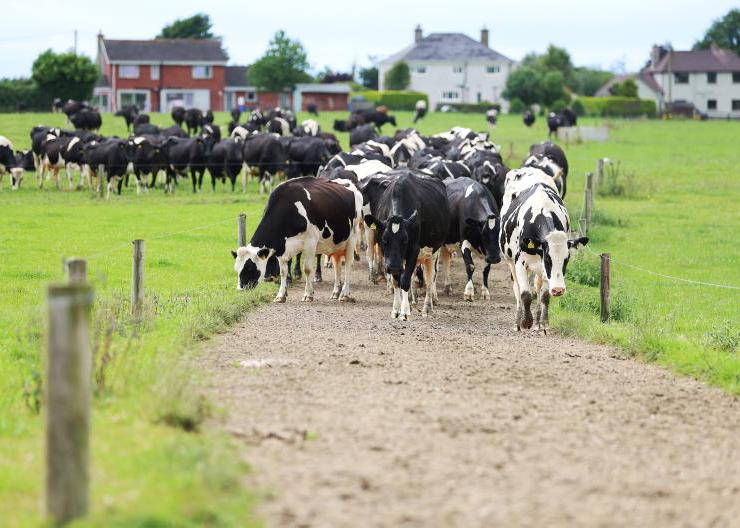Heat pumps extract heat from a cold “source” and emit to a hot “sink”. Every fridge, freezer, air-conditioning and cooling system is a heat pump – the only real variation is where the heat is taken from and emitted to.
In general, two units of cooling are added to one unit of electricity to produce three units of heat. If you can use the heating and cooling together, then you get five useful units of energy for one unit of electricity purchased.
This ratio of 1:3 is dependent on the unit, but more importantly on the temperature difference of the source and sink. Therefore, heat pumps providing low temperature heat (such as space heating) can often have a higher ratio of 4:1 or more.
Heat pumps provide approximately 20% of European heat, and will provide a very large portion of Irish and European heat by 2050.
Pig house heating
Many pig production systems have already switched over to heat pumps for providing space heating using air source heat pumps, and this is likely to increase further with the emergence of the new Support Scheme for Renewable Heat.
The key to achieve efficiencies of space heating is to ensure that the surface of the emitter is large and the temperature difference between the emitter and the air is low.
New pig units with pad or floor heating should be designed to minimise flow temperature through heat pads.
Ensuring high conductivity surfaces and narrow pipe spacing in pads and creeps will achieve the required surface temperature for lower flow temperatures. This temperature minimisation achieves a reduction of approximately 2% to 3% in energy costs for each degree lower flow temperature through the heat pump.
Ensuring distribution pipework is designed and installed to limit heat loss and minimise flow temperatures is also a key consideration.
Milk heat extraction
For dairy systems, farmers are very much aware of the cost of cooling milk, with many optimisation technologies utilised on farms. Pre-cooling with well water through a plate exchanger helps, but one often overlooked energy efficiency is the recovery of the heat extracted from the milk.
Heat recovery units are available as add-ons to condensers, recovering 20% to 60% of the available energy.
There are also purpose-built units available that simultaneously heat water and cool milk, recovering almost all of the cooling energy available from the milk.
These purpose-built systems can be more expensive to install initially but will provide a significant portion of water heating requirements for little additional running costs during their lifetime.
Each litre of milk cooled will supply just under 1l of hot water at 55°C. If you are investing in a new dairy unit, this should be a top priority for heat recovery.
Farm home
A significant portion of new homes in Ireland are being built with heat pumps, and with over 50% saving per unit of heat provided, they are becoming the key domestic retrofit technology.
Grants of €3,500 are now available from the Sustainable Energy Authority of Ireland. Heat pumps require lower temperature radiators and the introduction of a heat pump in a home is often coupled with changing some or all radiators in addition to other retrofit measures such as insulation and air leakage reduction.
The other key advantage of a heat pump is its ability to use on-farm solar photovoltaic (PV) or wind power.
Summer cooling in dairy systems matches the solar yield from PV panels, and heating needs often match the wind yield for pig and poultry systems. These closely coupled systems can replace part or all of fossil fuel use. The journey to the fossil fuel-free farm isn’t over yet, but it is making progress.
Read more
Rooftop solar scheme attractive for smaller farms
Bright future for on-farm renewables
Energy open day next Tuesday
Heat pumps extract heat from a cold “source” and emit to a hot “sink”. Every fridge, freezer, air-conditioning and cooling system is a heat pump – the only real variation is where the heat is taken from and emitted to.
In general, two units of cooling are added to one unit of electricity to produce three units of heat. If you can use the heating and cooling together, then you get five useful units of energy for one unit of electricity purchased.
This ratio of 1:3 is dependent on the unit, but more importantly on the temperature difference of the source and sink. Therefore, heat pumps providing low temperature heat (such as space heating) can often have a higher ratio of 4:1 or more.
Heat pumps provide approximately 20% of European heat, and will provide a very large portion of Irish and European heat by 2050.
Pig house heating
Many pig production systems have already switched over to heat pumps for providing space heating using air source heat pumps, and this is likely to increase further with the emergence of the new Support Scheme for Renewable Heat.
The key to achieve efficiencies of space heating is to ensure that the surface of the emitter is large and the temperature difference between the emitter and the air is low.
New pig units with pad or floor heating should be designed to minimise flow temperature through heat pads.
Ensuring high conductivity surfaces and narrow pipe spacing in pads and creeps will achieve the required surface temperature for lower flow temperatures. This temperature minimisation achieves a reduction of approximately 2% to 3% in energy costs for each degree lower flow temperature through the heat pump.
Ensuring distribution pipework is designed and installed to limit heat loss and minimise flow temperatures is also a key consideration.
Milk heat extraction
For dairy systems, farmers are very much aware of the cost of cooling milk, with many optimisation technologies utilised on farms. Pre-cooling with well water through a plate exchanger helps, but one often overlooked energy efficiency is the recovery of the heat extracted from the milk.
Heat recovery units are available as add-ons to condensers, recovering 20% to 60% of the available energy.
There are also purpose-built units available that simultaneously heat water and cool milk, recovering almost all of the cooling energy available from the milk.
These purpose-built systems can be more expensive to install initially but will provide a significant portion of water heating requirements for little additional running costs during their lifetime.
Each litre of milk cooled will supply just under 1l of hot water at 55°C. If you are investing in a new dairy unit, this should be a top priority for heat recovery.
Farm home
A significant portion of new homes in Ireland are being built with heat pumps, and with over 50% saving per unit of heat provided, they are becoming the key domestic retrofit technology.
Grants of €3,500 are now available from the Sustainable Energy Authority of Ireland. Heat pumps require lower temperature radiators and the introduction of a heat pump in a home is often coupled with changing some or all radiators in addition to other retrofit measures such as insulation and air leakage reduction.
The other key advantage of a heat pump is its ability to use on-farm solar photovoltaic (PV) or wind power.
Summer cooling in dairy systems matches the solar yield from PV panels, and heating needs often match the wind yield for pig and poultry systems. These closely coupled systems can replace part or all of fossil fuel use. The journey to the fossil fuel-free farm isn’t over yet, but it is making progress.
Read more
Rooftop solar scheme attractive for smaller farms
Bright future for on-farm renewables
Energy open day next Tuesday










SHARING OPTIONS